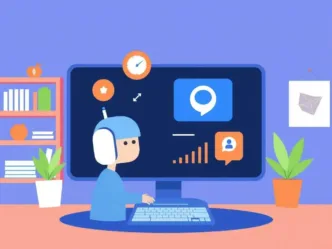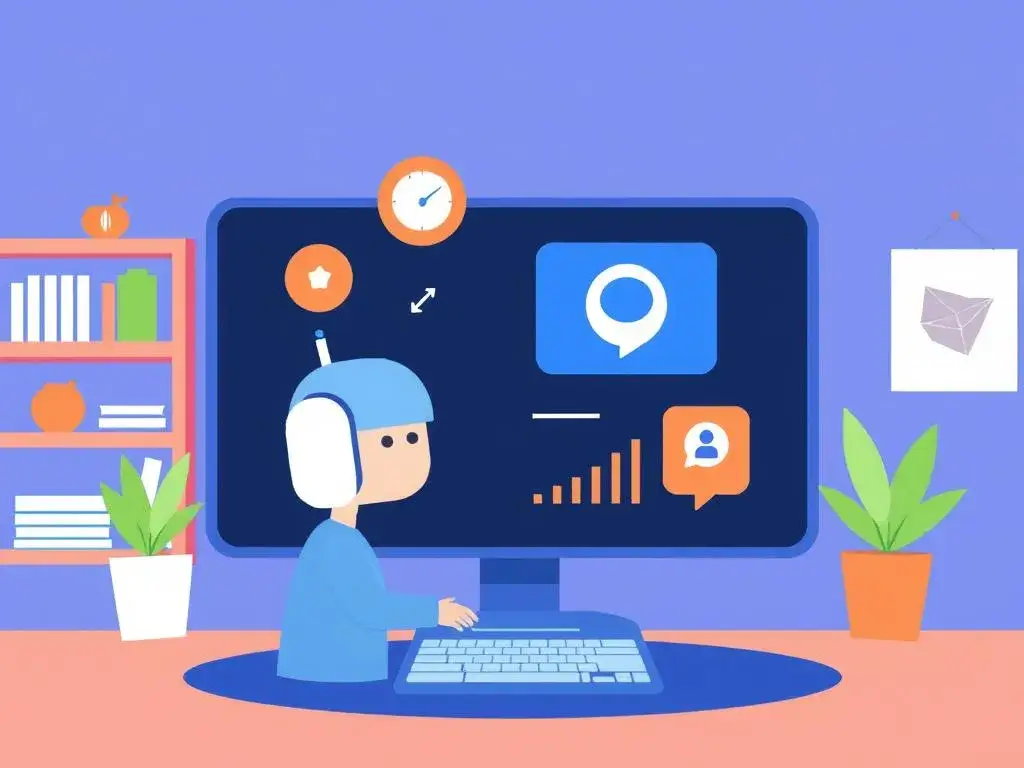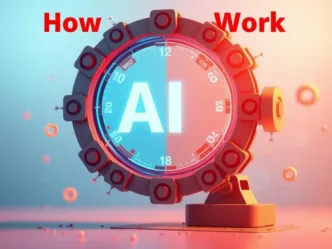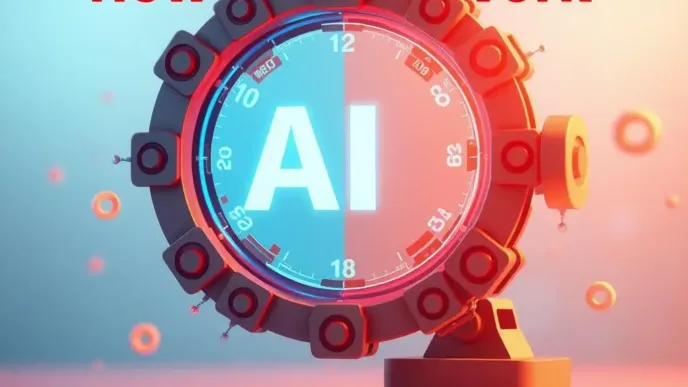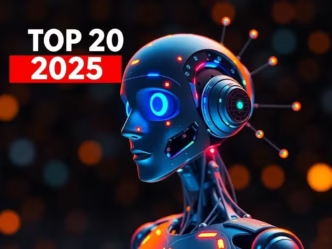Enhance your customer service operations with Talkdesk AI, a cloud-native solution that integrates advanced machine learning and AI agents for improved efficiency and personalized support. Discover its core functionalities, real-world applications, benefits, and emerging trends shaping the future of customer engagement.
Talkdesk AI: A Comprehensive Analysis for 2025
Talkdesk AI is the cloud-native, agentic-AI layer inside the Talkdesk Ascend AI™ platform. Instead of classic “if-then” IVRs, it deploys AI Agents that perceive, decide, and act on voice or digital channels 24/7—handling everything from simple FAQ deflection to complex, cross-system workflows.
Introduction
In the contemporary landscape of customer service technology, Talkdesk AI has emerged as a transformative solution, leveraging artificial intelligence to enhance contact center operations and improve customer interactions. Developed by Talkdesk, a leading provider of cloud-based customer experience platforms, Talkdesk AI integrates advanced machine learning and natural language processing to automate routine tasks, provide real-time insights, and personalize support.
As businesses increasingly prioritize efficient, data-driven customer service in 2025, Talkdesk AI offers a strategic advantage by streamlining workflows and boosting agent productivity.
This article provides a detailed examination of Talkdesk AI, encompassing its definition, core functionalities, operational mechanisms, illustrative examples, benefits, challenges, and emerging trends. It aims to equip professionals with a thorough understanding to facilitate informed decisions regarding its adoption.
Definition of Talkdesk AI
Talkdesk AI is defined as an artificial intelligence-powered suite of tools integrated into the Talkdesk contact center platform, designed to automate customer service processes, analyze interactions, and provide actionable insights. This technology utilizes machine learning algorithms to interpret customer queries, predict needs, and generate responses, thereby enhancing the efficiency of human agents.
The scope of Talkdesk AI extends across various customer service functions, including call routing, sentiment analysis, and knowledge base management, making it suitable for organizations seeking to optimize their support operations.
Unlike general AI assistants, Talkdesk AI is tailored specifically for contact centers, focusing on real-time decision-making and seamless integration with existing telephony systems. This specialization ensures that it addresses the unique demands of high-volume customer interactions, providing a reliable framework for scalable service delivery 🧠.
Core Components
| Product | What It Does | Typical Result |
|---|---|---|
| Talkdesk Autopilot™ | Conversational virtual agent for voice & chat | 38–40 % of inbound calls fully resolved without human agents |
| Talkdesk Copilot™ | Real-time agent co-pilot—next-best-action, knowledge cards, auto-summaries | 55 % faster average handle time |
| Talkdesk Navigator™ | Gen-AI routing—predicts intent and queues to the best skill | Reduces mis-routes by >30 % |
| Talkdesk Identity™ | Biometric voice authentication in <5 sec | Cuts fraud & ID verification time |
| Talkdesk AI Trainer™ | No-code tool for business users to fine-tune AI answers | Keeps intent models fresh without data-science tickets |
Real-World Use-Case Snapshots
🏠 JK Moving & Storage
- Challenge: 1 % more answered calls = $1 M extra revenue.
- Solution: Autopilot + Copilot deflect routine calls; Copilot gives agents upsell scripts.
- Outcome: Moved from cost center to profit center; payback in <6 months.
📞 Humach (BPO)
- Volume: 215 k calls per month.
- Autopilot (voice + chat) resolved 80 k digital + 85 k voice calls automatically.
- Bottom line: 75 % digital deflection, freeing agents for complex issues .
🏥 Healthcare Contact Center
- AI Agents for Healthcare (May 2025 launch)
- Appointment scheduling
- Insurance authorisation checks
- Prescription refills
- Modular approach: one agent per contact reason; works cloud OR on-prem.
How Talkdesk AI Works Under the Hood
- Customer speaks or types → ASR transcribes.
- LLM-powered NLU detects intent & entities.
- AI Agent queries CRM, ERP, knowledge base via APIs.
- Dynamic response created with contextual memory of past interactions.
- Hand-off to human if confidence < threshold or sentiment drops .
Quick-Start Cheat-Sheet
| Want to… | Turn On… | Time-to-Value |
|---|---|---|
| Deflect password-reset calls | Autopilot + FAQ knowledge base | <1 week |
| Cut agent after-call work | Copilot auto-summary | 1 day |
| Route VIP customers faster | Navigator + Identity | <2 weeks |
Core Functionalities
Talkdesk AI is distinguished by a robust set of functionalities that enhance contact center performance:
- Intelligent Call Routing 📞: Automatically directs calls to the most appropriate agent based on customer history and query complexity.
- Sentiment Analysis 🔍: Analyzes customer tone and emotions during interactions to guide agent responses.
- Automated Responses ⚙️: Generates instant replies to common inquiries, reducing wait times.
- Knowledge Base Integration 📚: Provides agents with real-time access to relevant information during calls.
- Performance Analytics 📊: Tracks agent efficiency and customer satisfaction metrics for continuous improvement.
- Predictive Insights 🔮: Forecasts customer needs based on historical data to enable proactive support.
These functionalities collectively enable organizations to deliver efficient, personalized customer experiences.
Operational Mechanisms
Talkdesk AI operates through a structured framework that integrates machine learning with contact center infrastructure. The process begins with data ingestion, where customer interactions via voice or text are captured and processed using natural language understanding (NLU) to identify intent. Machine learning models then analyze this data to generate responses or route calls.
For example, during a customer call, the AI assesses sentiment in real time and suggests responses to the agent. The system employs feedback loops to refine its models, learning from past interactions to improve accuracy. Integration with cloud-based telephony ensures seamless operation, with security measures like encryption protecting sensitive data 🌐.
Talkdesk AI Examples
To illustrate its practical impact, consider these examples of Talkdesk AI in action:
- Customer Query Resolution 📞: An e-commerce customer asks about order status; Talkdesk AI instantly retrieves the information and provides a scripted response to the agent.
- Sentiment-Based Escalation 🔍: During a frustrated customer’s call, the AI detects negative sentiment and alerts a supervisor for intervention.
- Proactive Support 🔮: Based on purchase history, the AI suggests upsell opportunities during interactions.
- Multilingual Assistance 🌍: For international customers, the AI translates queries in real time, ensuring clear communication.
- Performance Coaching 📈: Post-call analysis provides agents with feedback on response times and customer satisfaction.
These examples showcase Talkdesk AI’s ability to enhance service quality.
Benefits of Talkdesk AI
The adoption of Talkdesk AI offers several advantages for organizations:
- Improved Efficiency ⚡: Automates routine tasks, reducing agent workload by up to 30%.
- Enhanced Customer Satisfaction 😊: Provides faster, more accurate responses, boosting loyalty.
- Cost Savings 💰: Lowers operational expenses through automation.
- Data-Driven Insights 📊: Offers analytics for strategic improvements.
- Scalability 📈: Handles increasing call volumes without additional staffing.
These benefits position Talkdesk AI as a strategic asset.
Challenges and Limitations
Talkdesk AI presents certain challenges:
- Technical Complexity ⚙️: Integration with existing systems requires expertise.
- Accuracy Issues 🔍: May misinterpret complex queries.
- Data Privacy 🔒: Handling sensitive information demands robust security.
- User Adoption 👥: Agents may resist AI assistance initially.
- Cost Implications 💸: Subscription fees can be high for small businesses.
These limitations necessitate careful implementation.
Emerging Trends
As we look towards 2025, several key trends are shaping the landscape of Talkdesk AI and its integration within customer service environments:
- Hyper-Personalization: Increasingly, AI will leverage customer data to create tailored experiences. This includes personalizing interactions not just based on previous purchases but also on sentiment, preferences, and real-time behavior.
- Multi-Channel Integration: Future developments are focusing on seamless interaction across multiple channels. Talkdesk AI will increasingly enable customers to switch between voice, chat, and social media without losing context, enhancing the overall experience.
- Predictive Customer Support: Organizations will invest more in AI capabilities that predict customer needs before they arise. By analyzing patterns in data, Talkdesk AI will initiate proactive support measures, such as reaching out to customers with solutions before they even encounter issues.
- Increased Automation: The scope of automation will expand beyond simple tasks. Businesses will rely on Talkdesk AI to automate complex workflows, allowing agents to concentrate on high-value tasks that require human judgment.
- Augmented Reality (AR) Assistance: Integrating AR technologies with Talkdesk AI will enable agents to deliver more effective support, especially for technical troubleshooting. Customers could receive visual guidance in real-time, enhancing understanding and issue resolution.
- Ethical AI Practices: As AI technology evolves, an emphasis on ethical practices will become paramount. Organizations will focus on transparency in AI operations, ensuring customers understand how their data is used and maintaining trust.
- Real-Time Analytics: There will be an increasing push for real-time feedback and analytics. Businesses will seek immediate insights from interactions to adapt strategies on the fly, improving customer service outcomes and agent performance.
- Cross-Industry Collaborations: We can expect more partnerships between technology providers and industries seeking to enhance customer engagement. Such collaborations will lead to innovative solutions that harness the strengths of both AI technology and industry-specific expertise.
Conclusion
Talkdesk AI represents a powerful solution for modern customer service, offering automation and insights that enhance operations. While challenges exist, its benefits far outweigh them for many organizations. As the field progresses, Talkdesk AI will continue to play a vital role in customer engagement.
Talkdesk AI is moving beyond chatbots to agentic AI—autonomous agents that resolve, route, and even upsell across voice, chat, and social channels, without scripts, while giving supervisors zero-code control to keep models accurate and compliant.
